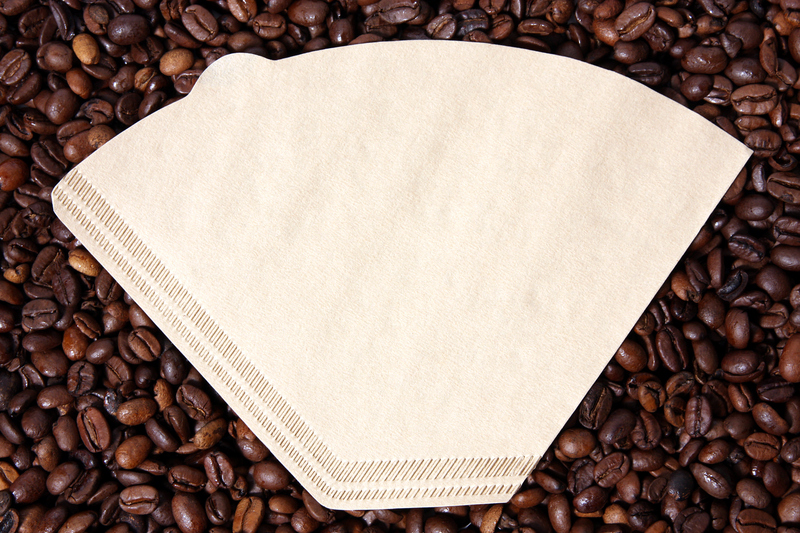Do Leather Sofas Benefit from Steam Cleaning?
Posted on 27/05/2025
Do Leather Sofas Benefit From Steam Cleaning? A Comprehensive Guide
Leather sofas are timeless pieces of furniture that exude luxury and comfort. To keep them looking their best, proper cleaning and maintenance are essential. Steam cleaning leather sofas is a method many homeowners consider, as it promises a deep clean without the harsh chemicals. But do leather sofas truly benefit from steam cleaning, or does this process risk damaging your valuable investment? In this guide, we'll dive deep into the pros, cons, and best practices, helping you make the best decision for your beloved seating.

Understanding Leather Sofas and Their Cleaning Needs
Leather is a natural material renowned for its durability, elegance, and unique texture. However, its organic nature means it interacts differently with cleaning methods compared to synthetic fabrics. When discussing the cleanliness of leather sofas, several critical factors come into play:
- Type of leather: Full-grain, top-grain, bonded, and faux leathers react differently to moisture and heat.
- Porosity: Leather is somewhat porous, meaning it can absorb liquids and become stained or damaged if not treated carefully.
- Protective coatings: Many leather sofas have protective finishes that can wear off over time or react to various cleaning techniques.
Given these properties, it's crucial to evaluate whether steam cleaning your leather sofa is a safe and beneficial option.
How Does Steam Cleaning Work?
Steam cleaning employs heated water vapor to loosen grime, dirt, oils, and bacteria on surfaces. A steam cleaner usually has a nozzle or attachment that disperses a controlled amount of steam, allowing users to target specific locations.
- No harsh chemicals: Steam cleaning generally relies solely on water, making it appealing for those concerned about chemical residues.
- Germ removal: High temperatures kill many common bacteria and dust mites, enhancing hygiene.
- Deep cleaning: The penetrating power of steam can loosen debris that typical wiping might leave behind.
Potential Benefits of Steam Cleaning Leather Sofas
It's natural to wonder, "Can leather sofas be steam cleaned?" and, more importantly, "Does steam cleaning benefit leather sofas?" Here are potential advantages often cited:
- Thorough sanitation: Steam removes surface dirt, bacteria, and allergens more effectively than simple dusting or wiping down.
- Chemical-free cleaning: Since water is generally the only ingredient, steam cleaning is non-toxic for kids and pets.
- Quick drying: Steam uses less water than traditional washing, leading to faster drying times and reducing risk of lingering moisture.
- Refreshes appearance: When done correctly, steam can rejuvenate the look of slightly dull or tired leather.
Despite these potential benefits, the critical question remains: Is steam cleaning safe for all leather sofas?
Risks: What Can Go Wrong With Steam Cleaning Leather Sofas?
Leather is sensitive to both moisture and heat. Excessive exposure to either can lead to several issues:
- Drying and cracking: Heat can cause leather to lose its natural oils, making it brittle, dry, and prone to cracking.
- Warping and discoloration: Steam may cause certain leathers to warp, fade, or lose their rich color over time.
- Peeling and blistering: The top protective layer of some faux or bonded leathers may peel or blister away due to intense heat and moisture.
- Permanent stains: Steam might push stains deeper into the pores, making them harder to remove or even setting them permanently.
Warning: Some manufacturers' warranties are voided if steam cleaning is used on leather furniture. Always check your sofa's care label and warranty before proceeding.
Which Leather Sofas Can Be Steam Cleaned?
Not all leather sofas are equal. The type of leather and its finish greatly influence how it will react to moisture and high temperatures:
-
Full-grain leather:
- Most sensitive to moisture and heat.
- Typically not recommended for steam cleaning, as it can cause irreversible damage.
-
Top-grain and protected leather:
- Often has a finish that offers some resilience but can still be damaged if exposed to too much steam.
- Spot testing and using minimal steam is crucial.
-
Bonded or faux leather:
- Generally less prone to warping, but protective coatings may peel.
- Check manufacturer guidelines before attempting steam cleaning.
Always Do a Patch Test First
Before using any cleaning method -- especially steam -- on your leather furniture, test a small, inconspicuous area. Wait several hours to make sure there's no adverse reaction like discoloration, stiffening, or surface damage.
Alternatives to Steam Cleaning Leather Sofas
If steam cleaning isn't ideal for your leather sofa, consider these safer, effective alternatives:
1. Gentle Wiping and Dusting
- Use a soft, dry microfiber cloth to remove dust and loose debris.
- For sticky spots, lightly dampen the cloth with distilled water (never soak the leather).
2. Leather-Safe Cleaning Solutions
- Purchase a commercial leather cleaner or make a mild soap and water solution (using a few drops of gentle, fragrance-free soap).
- Wipe gently and follow up with a clean, damp cloth to remove residue.
3. Conditioning and Protecting
- Apply a leather conditioner every 6-12 months to restore lost oils and prevent drying or cracking.
- Specialized products also shield against UV rays and stains.
Best Practices: How to Care for Leather Sofas
Your leather sofa's longevity hinges on proper care. Follow these expert-recommended tips for long-lasting, beautiful furniture:
-
Clean regularly:
- Dust weekly with a microfiber cloth.
- Avoid using excessive water or strong chemicals.
-
Address spills immediately:
- Blot gently--never rub--to absorb as much liquid as possible.
- Use a lightly dampened cloth to clean sticky spots, followed by a dry cloth.
-
Avoid direct sunlight and heat:
- Prolonged exposure can fade and dry out leather.
-
Condition routinely:
- Apply a suitable leather conditioner as directed by the product or furniture manufacturer.
-
Test cleaning products:
- Always patch-test any new cleaning or conditioning product in a hidden area first.
Steam Cleaning Leather Sofas: When Is It Appropriate?
If you're determined to try steam cleaning, consider these occasions and precautions for optimal results and minimal risk:
- Professional cleaning: Consider hiring specialists with experience in steam cleaning leather furniture. They understand the delicate nature of various leathers and possess advanced equipment to regulate moisture and heat.
- Small areas only: Use steam only to tackle specific stains, never the entire sofa. Keep the nozzle moving and avoid over-saturating any section.
- Minimal heat and moisture: Set your steam cleaner to its lowest setting and use a microfiber attachment.
- Immediate drying: After steam cleaning, use a dry, soft towel to remove excess moisture and allow plenty of airflow to speed up drying.
DIY Steam Cleaning: Step-by-Step Guide
If you still wish to proceed with cleaning leather with steam at home, take the following precautions:
- Vacuum the sofa using a soft brush attachment to remove dust and dirt.
- Test the steam cleaner on an inconspicuous spot.
- Use the microfiber cloth attachment, ensuring it's clean and residue-free.
- Apply steam briefly, moving constantly to avoid concentrating heat or moisture.
- Immediately wipe each section dry with a soft towel.
- Allow the sofa to air dry, avoiding use until fully dry.
- Finish by applying a quality leather conditioner.
Frequently Asked Questions About Steam Cleaning Leather Sofas
Is steam cleaning safe for all types of leather sofas?
No. Full-grain and most natural leathers are generally unsafe for steam cleaning. Only protected or synthetic leathers, and even then, with caution and patch testing, can sometimes tolerate low-intensity steam cleaning.
Can steam cleaning remove stains from leather sofas?
Steam may help loosen some stains, but often it risks pushing stains deeper. For tough spots, use leather-specific spot cleaners or consult a professional.
Are there professional services specializing in steam cleaning leather?
Yes, some upholstery cleaning companies use specialized equipment and methods to carefully steam clean certain types of leather furniture. This is typically safer than DIY approaches.
What should I do if my leather sofa is accidentally damaged by steam?
Stop using steam immediately. Blot away excess moisture, let the area dry naturally, and apply a quality leather conditioner. For visible damage, contact a leather repair specialist as soon as possible.

Conclusion: Do Leather Sofas Benefit From Steam Cleaning?
So, do leather sofas benefit from steam cleaning? The answer depends on the type of leather and the care with which steam is applied. While steam cleaning offers deep sanitation without chemicals, the risks to natural leather--such as drying, cracking, and discoloration--often outweigh the benefits. For most leather furniture, traditional cleaning methods and regular conditioning remain the safest and most effective maintenance routines. If you're considering steam cleaning, consult your sofa's manufacturer guidelines and always test a small area first. When in doubt, seek the help of a professional leather cleaning specialist to protect your investment for years to come.
Key Takeaways
- Steam cleaning leather sofas can offer hygiene benefits but carries significant risks of damage, especially with natural leather.
- Always consult manufacturer guidelines and test first.
- Safer alternatives include gentle wiping, spot cleaning, and routine conditioning.
- Professional care is recommended for deep cleaning or stubborn stains.
For a longer lifespan and lasting beauty, treat your leather sofa with the right mix of caution, care, and routine attention.



